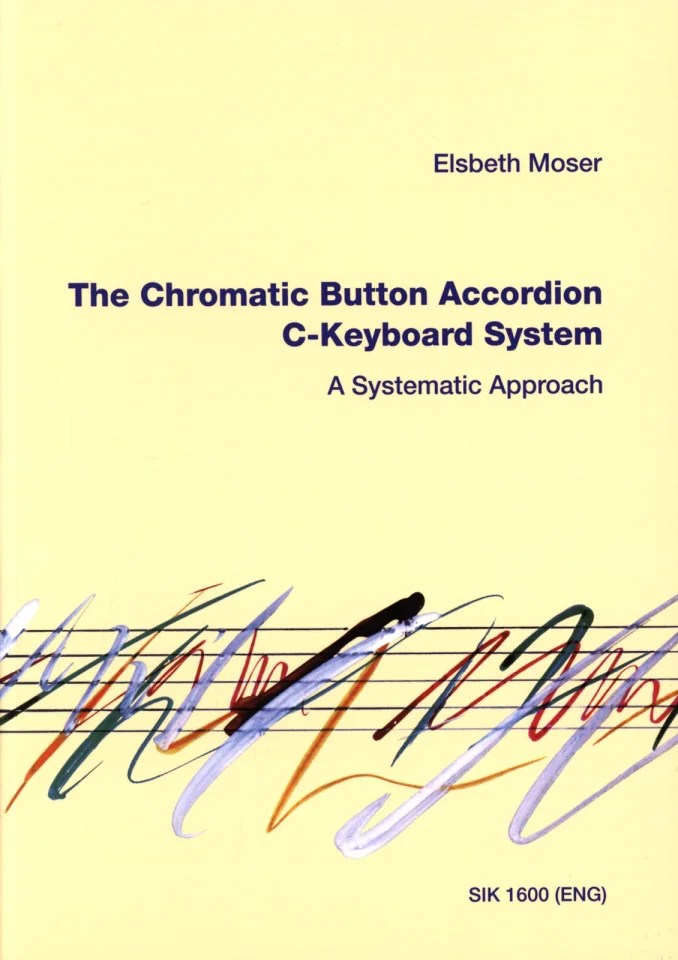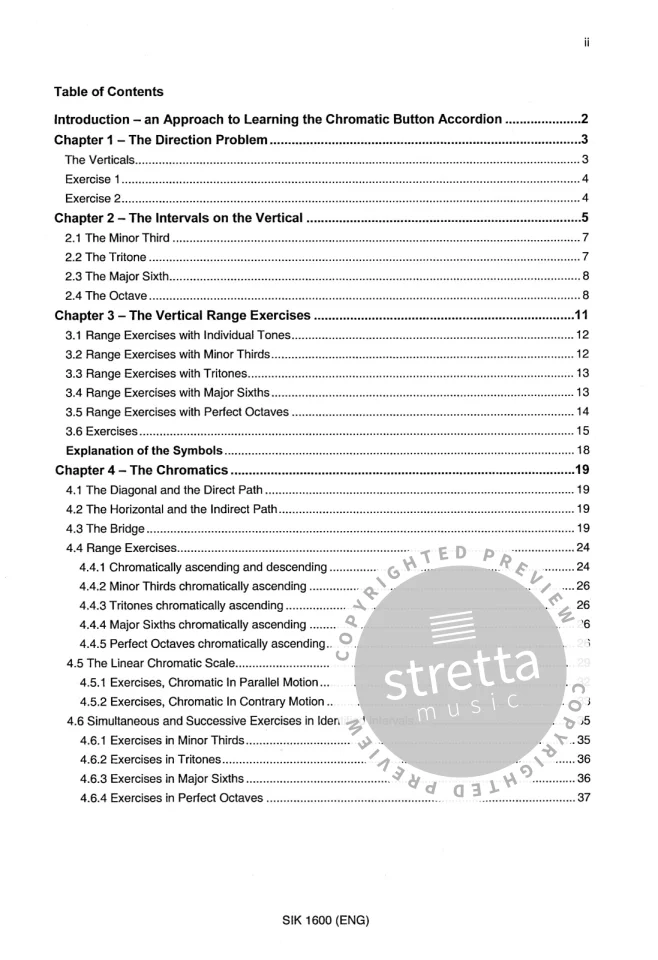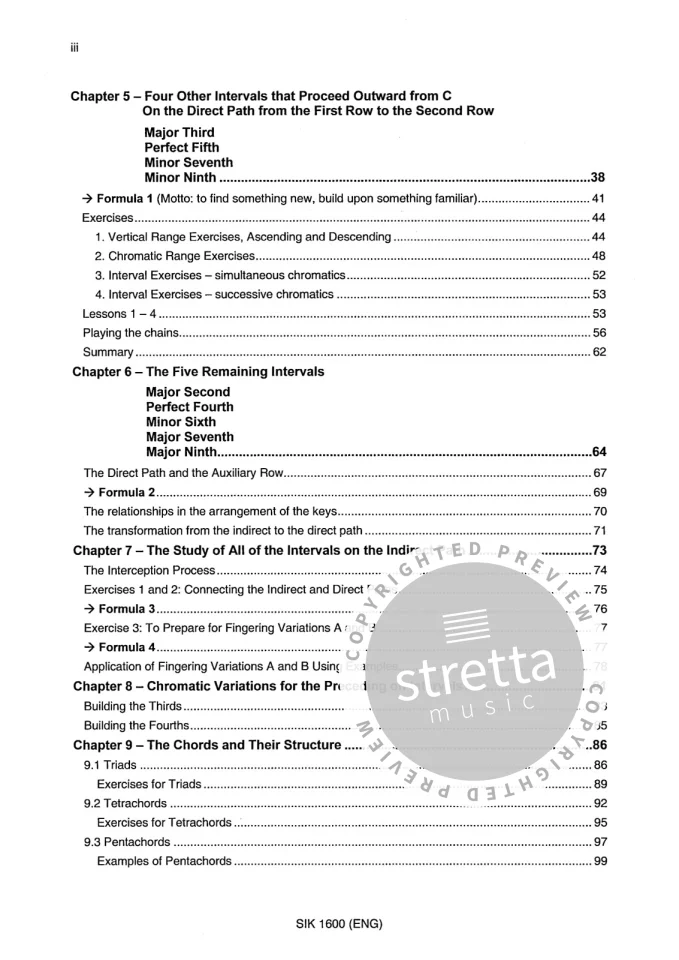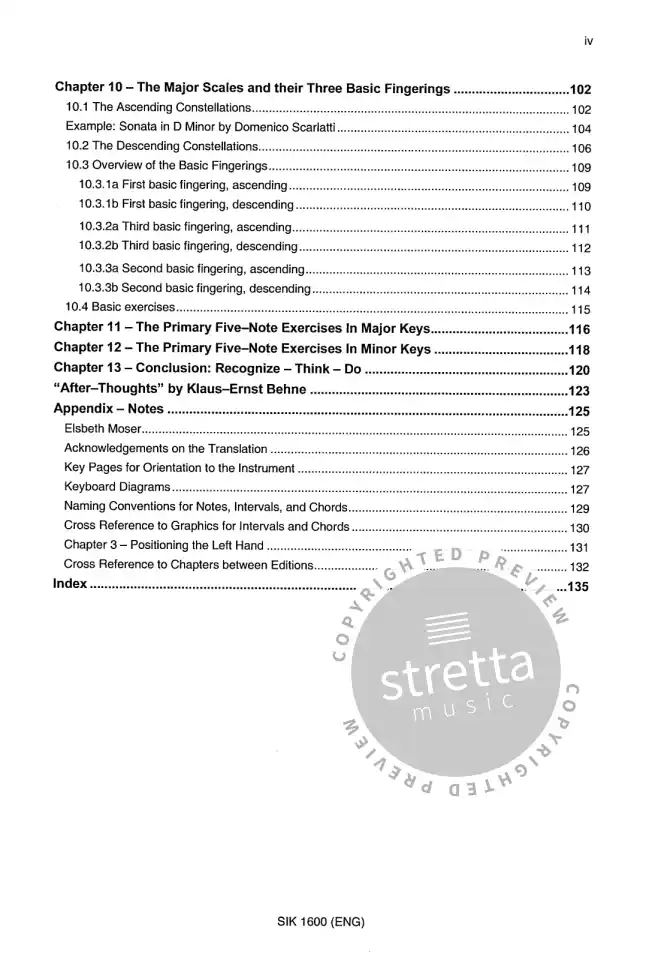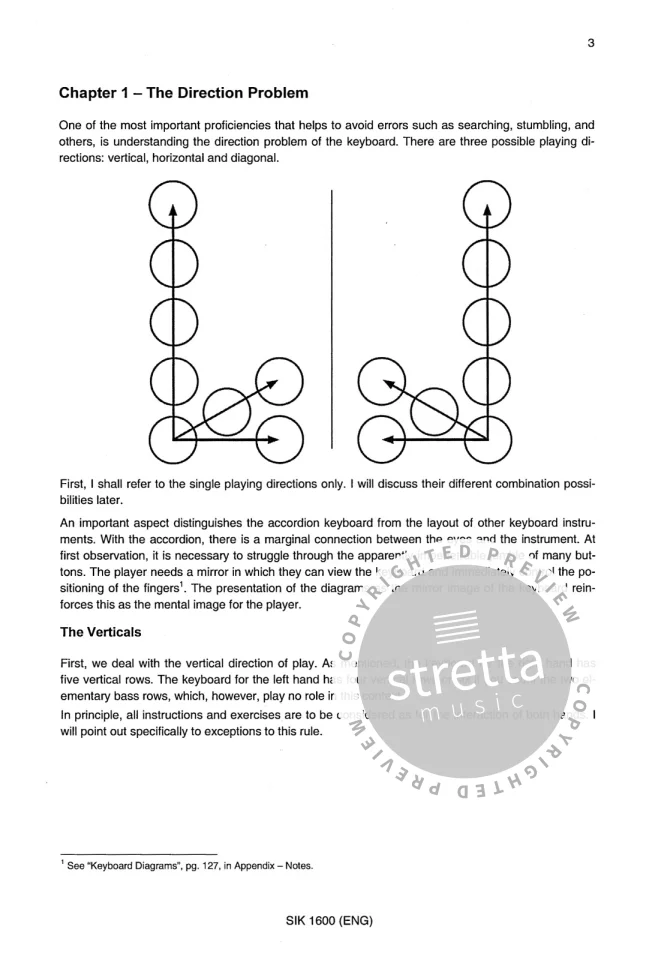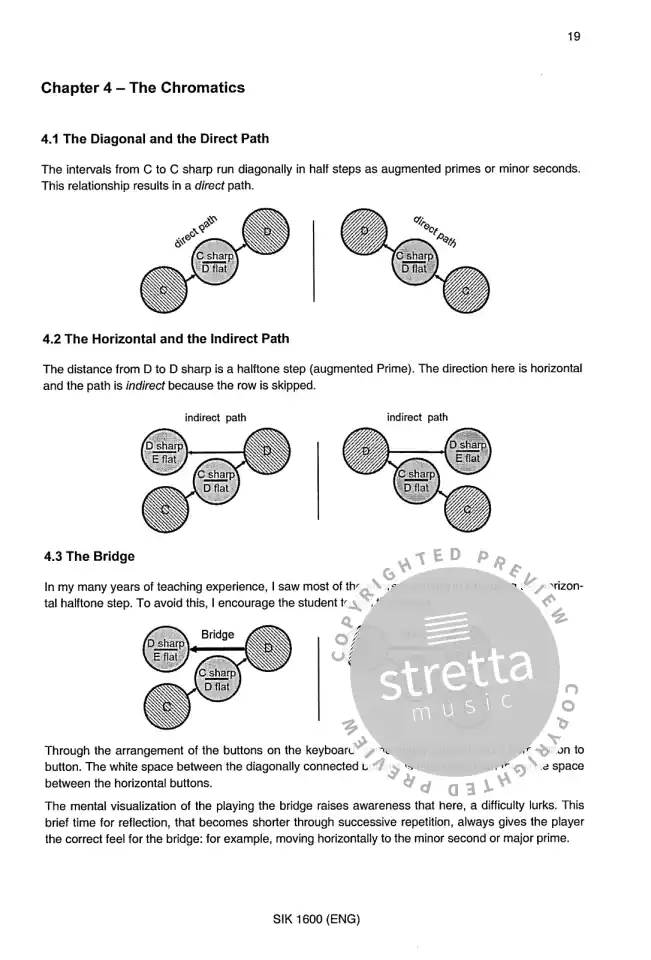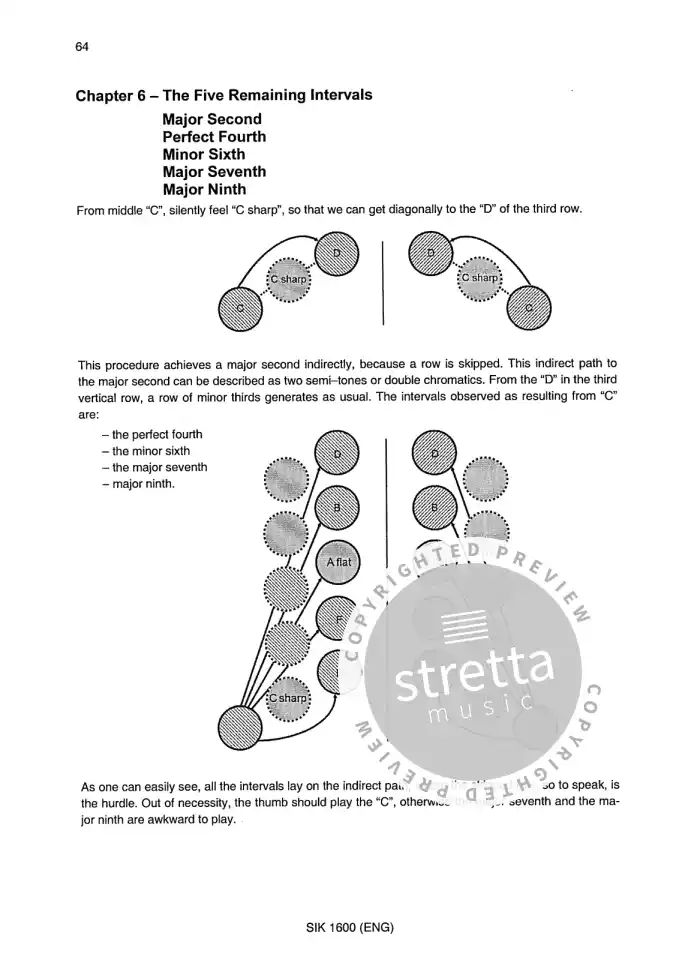Inhalt
-
Introduction – an Approach to Learning the Chromatic Button Accordion
-
Chapter 1 – The Direction Problem
-
The Verticals
-
Exercise 1
-
Exercise 2
-
Chapter 2 – The Intervals on the Vertical
-
2.1 The Minor Third
-
2.2 The Tritone
-
2.3 The Major Sixth
-
2.4 The Octave
-
Chapter 3 – The Vertical Range Exercises
-
3.1 Range Exercises with Individual Tones
-
3.2 Range Exercises with Minor Thirds
-
3.3 Range Exercises with Tritones
-
3.4 Range Exercises with Major Sixths
-
3.5 Range Exercises with Perfect Octaves
-
3.6 Exercises
-
Explanation of the Symbols
-
Chapter 4 – The Chromatics
-
4.1 The Diagonal and the Direct Path
-
4.2 The Horizontal and the Indirect Path
-
4.3 The Bridge
-
4.4 Range Exercises
-
4.4.1 Chromatically ascending and descending
-
4.4.2 Minor Thirds chromatically ascending
-
4.4.3 Tritones chromatically ascending
-
4.4.4 Major Sixths chromatically ascending
-
4.4.5 Perfect Octaves chromatically ascending
-
4.5 The Linear Chromatic Scale
-
4.5.1 Exercises, Chromatic In Parallel Motion
-
4.5.2 Exercises, Chromatic In Contrary Motion
-
4.6 Simultaneous and Successive Exercises in Identified Intervals
-
4.6.1 Exercises in Minor Thirds
-
4.6.2 Exercises in Tritones
-
4.6.3 Exercises in Major Sixths
-
4.6.4 Exercises in Perfect Octaves
-
Chapter 5 – Four Other Intervals that Proceed Outward from C
-
On the Direct Path from the First Row to the Second Row
-
Major Third
-
Perfect Fifth
-
Minor Seventh
-
Minor Ninth
-
Formula 1 (Motto: to find something new, build upon something familiar)
-
Exercises
-
1. Vertical Range Exercises, Ascending and Descending
-
2. Chromatic Range Exercises
-
3. Interval Exercises – simultaneous chromatics
-
4. Interval Exercises – successive chromatics
-
Lessons 1 – 4
-
Playing the chains
-
Summary
-
Chapter 6 – The Five Remaining Intervals
-
Major Second
-
Perfect Fourth
-
Minor Sixth
-
Major Seventh
-
Major Ninth
-
The Direct Path and the Auxiliary Row
-
Formula 2
-
The relationships in the arrangement of the keys
-
The transformation from the indirect to the direct path
-
Chapter 7 – The Study of All of the Intervals on the Indirect Path
-
The Interception Process
-
Exercises 1 and 2: Connecting the Indirect and Direct Paths
-
Formula 3
-
Exercise 3: To Prepare for Fingering Variations A and B
-
Formula 4
-
Application of Fingering Variations A and B Using Examples
-
Chapter 8 – Chromatic Variations for the Preceding on Intervals
-
Building the Thirds
-
Building the Fourths
-
Chapter 9 – The Chords and Their Structure
-
9.1 Triads
-
Exercises for Triads
-
9.2 Tetrachords
-
Exercises for Tetrachords
-
9.3 Pentachords
-
Examples of Pentachords
-
Chapter 10 – The Major Scales and their Three Basic Fingerings
-
10.1 The Ascending Constellations
-
Example: Sonata in D Minor by Domenico Scarlatti
-
10.2 The Descending Constellations.
-
10.3 Overview of the Basic Fingerings
-
10.3.1a First basic fingering, ascending
-
10.3.1b First basic fingering, descending
-
10.3.2a Third basic fingering, ascending
-
10.3.2b Third basic fingering, descending
-
10.3.3a Second basic fingering, ascending
-
10.3.3b Second basic fingering, descending
-
10.4 Basic exercises
-
Chapter 11 – The Primary Five–Note Exercises In Major Keys
-
Chapter 12 – The Primary Five–Note Exercises In Minor Keys
-
Chapter 13 – Conclusion: Recognize – Think – Do
-
“After–Thoughts” by Klaus–Ernst Behne
-
Appendix – Notes
-
Elsbeth Moser
-
Acknowledgements on the Translation
-
Key Pages for Orientation to the Instrument
-
Keyboard Diagrams
-
Naming Conventions for Notes, Intervals, and Chords
-
Cross Reference to Graphics for Intervals and Chords
-
Chapter 3 – Positioning the Left Hand
-
Cross Reference to Chapters between Editions
-
Index
